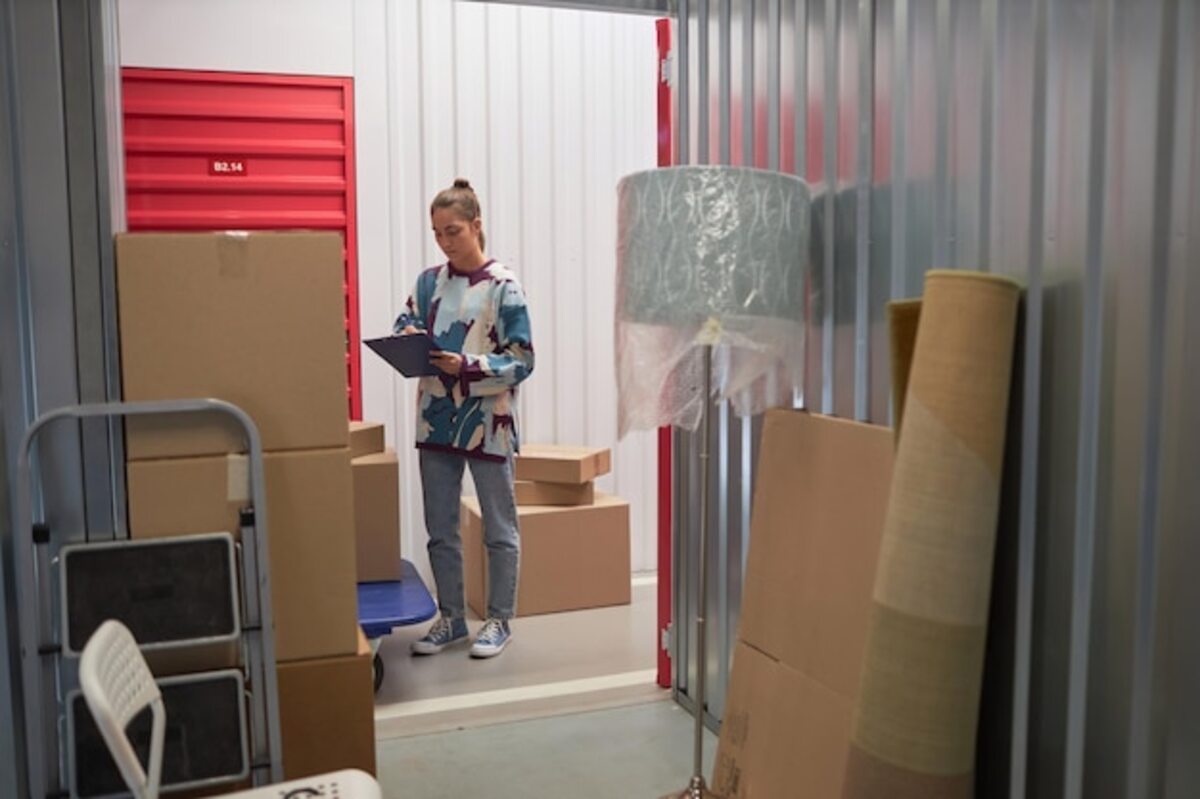How to prepare a temporary space during your move

Are you about to move and feel like chaos is taking over your home? Preparing a temporary space might be the perfect solution to maintain order and calm during this process. This article will guide you in creating a functional refuge where you can organize your belongings and facilitate the transition to your new home. With these practical tips, you can make your move a more manageable and less stressful experience. Discover how to do it without losing your mind!
The importance of a designated space for your belongings
The importance of establishing a designated space for your belongings during a move cannot be overstated. Having a specific area where you can organize boxes, furniture, and other items greatly facilitates the process. By creating this temporary space, you can avoid the overwhelming feeling that many people experience when seeing all their belongings scattered around the house. Additionally, having a defined place for everything will allow you to quickly access what you need, whether it's a kitchen utensil or a piece of clothing, without having to rummage through piles of boxes.
An organized space also helps reduce the stress associated with moving. Knowing exactly where each item is allows you to better plan your time and daily tasks, enabling you to focus on other important aspects of the moving process, such as coordinating logistics or communicating with service providers. Ultimately, taking the time to prepare a functional refuge will give you a sense of control and order amidst the inevitable chaos that comes with any home change.
2. How to select the right area in your temporary home
When selecting the right area in your temporary home, it's essential to consider functionality and accessibility. Look for a space that is free from distractions and allows you to move easily while organizing your belongings. Ideally, a room or a corner separate from the daily hustle and bustle can be perfect; this will not only help you concentrate better but also prevent your items from mixing with the everyday activities of the home. Remember to keep essential items for your daily routine close by, such as personal hygiene products, comfortable clothing, and basic tools.
Also, consider the lighting and ventilation of the selected area. A well-lit space creates a more pleasant environment and facilitates the task of sorting and packing. If the area has windows, make sure to take advantage of natural light as much as possible. Ventilation is also essential to prevent items from getting damp or developing unpleasant odors during the time they will be stored there. By paying attention to these details when choosing your temporary space, you can transform this moving period into a more organized and less overwhelming experience.
3. Essential supplies for organizing your space
To ensure that your space is functional and organized, it is essential to have the right essential supplies. One of the first things you will need is boxes of different sizes. Boxes will help you sort your belongings, allowing you to group similar items and label them for easy location in the future. Additionally, make sure to have strong adhesive tape and bubble wrap or packing materials to protect fragile items during the move. This type of organization will not only reduce clutter but also allow you to quickly access what you need without wasting time searching through a sea of items.
Another key element for organizing your temporary space is organizers and containers. These can range from baskets to modular shelves, depending on the available space and the amount of belongings you have. Using these organizers will help you maximize the use of vertical space and keep everything in its place, preventing important items from mixing with those you will use in the new home. Additionally, consider incorporating a designated area for essential items such as important documents, daily clothing, or basic utensils; this will allow you to have everything you need at hand while managing the transition to your new life. With these well-chosen essential supplies, your move will be much more organized and controlled.
4. Tips for labeling boxes and keeping everything organized
When it comes to moving, one of the keys to maintaining order is to properly label the boxes. Start by sorting your belongings into categories, such as clothing, kitchen utensils, books, and personal items. Use adhesive labels or permanent markers to identify each box with its corresponding content. You can opt for a color-coding system: for example, blue boxes for the kitchen and red for the bedroom. This technique not only makes the unpacking process in your new home easier but also allows you to quickly locate what you need during the transition.
In addition to labeling the boxes, it is advisable to keep a detailed inventory of all the items you are packing. Create a list that includes the box number and the specific contents inside it. This will help ensure that nothing gets lost along the way and will allow you to have better control over your belongings during the move. If you are using a temporary space as shelter during this process, make sure to also keep everything organized and accessible; place the most important boxes on top or in a location where they are easy to reach. With these simple yet effective tips, your move will be much more organized and less stressful.
5. Strategies to maximize available space
To maximize the available space during your move, it is essential to take advantage of every corner of your temporary home. An effective strategy is to use multifunctional furniture that serves more than one purpose. For example, a bed with built-in drawers can store bedding and other items, while folding tables can be used as desks or additional surfaces to sort your belongings. Additionally, consider using vertical shelves that will allow you to utilize the height of the space and keep your items organized without sacrificing floor area.
Another useful technique is to implement a categorization-based organization system. Assign specific areas for each type of item: clothing, kitchen utensils, important documents, among others. Use clear or labeled boxes to facilitate identification and access to what you need at any given moment. Don't forget to clear common areas; keeping hallways and open spaces will contribute to a sense of order and reduce the likelihood of accidents during the process. With these strategies in mind, you can optimize your temporary space and make your move more efficient and less overwhelming.
6. Maintaining comfort: decorating your temporary area
To ensure that your temporary area remains comfortable and functional, it is essential to pay attention to decorative details. Choose furniture that is practical but also cozy; a comfortable chair or a small sofa can become the ideal place to relax after a day of packing. Additionally, include simple decorative elements like cushions, blankets, or a soft lamp to create a warm and pleasant atmosphere. Do not underestimate the power of indoor plants: a few strategically placed pots not only enhance the aesthetics of the space but also bring freshness and life to your temporary refuge.
Visual organization also plays a crucial role in the comfort of your temporary area. Use open shelves or decorative boxes to store your belongings in an orderly and accessible manner. Keeping the space clutter-free will help you find what you need effortlessly and reduce the feeling of chaos that can accompany a move. Consider adding personal touches like family photos or art on the walls; these small details can make you feel more at home during this transitional period, reminding you that even though you are between two homes, comfort is always within reach.
7. What to do with non-essential items during the move
When preparing for a move, it is common to accumulate a large number of non-essential items that can hinder the process. The first thing you should do is evaluate which objects you really need in your temporary space and which can be packed or even discarded. Sort your belongings into three categories: keep, donate/sell, and throw away. This exercise will not only help you reduce the volume of things you transport but also allow you to better organize the temporary space by leaving only the essentials visible, thus facilitating coexistence amid the clutter. Once you have decided what to do with non-essential items, it is advisable to use labeled boxes to store them properly. When packing these items, make sure they are well protected and easy to identify when it comes time to unpack. You can choose to store these boxes in a remote place within the temporary space, such as a closet or a less visible corner. This way, you will keep your refuge tidy and functional while waiting for your new home to arrive. Remember that every decision you make now can greatly simplify your transition and help you start off on the right foot in your new space.



